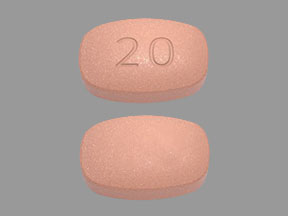Generic Nourianz Availability
Last updated on Apr 10, 2025.
Nourianz is a brand name of istradefylline, approved by the FDA in the following formulation(s):
NOURIANZ (istradefylline - tablet;oral)
Is there a generic version of Nourianz available?
No. There is currently no therapeutically equivalent version of Nourianz available in the United States.
Note: Fraudulent online pharmacies may attempt to sell an illegal generic version of Nourianz. These medications may be counterfeit and potentially unsafe. If you purchase medications online, be sure you are buying from a reputable and valid online pharmacy. Ask your health care provider for advice if you are unsure about the online purchase of any medication.
See also: Generic Drug FAQ.
Related patents
Patents are granted by the U.S. Patent and Trademark Office at any time during a drug's development and may include a wide range of claims.
-
Administering adenosine A.sub.2A receptor antagonist to reduce or suppress side effects of parkinson's disease therapy
Patent 7,727,993
Issued: June 1, 2010
Inventor(s): Kase; Hiroshi et al.
Assignee(s): Kyowa Hakko Kirin Co., Ltd. (Tokyo, JP)The present invention is directed to methods of treating movement disorders by administering an effective amount of one or more adenosine A.sub.2A receptor antagonists to a patient in need thereof. The present invention also provides methods of decreasing the adverse effects of L-DOPA in patients receiving L-DOPA therapy in the treatment of Parkinson's disease. The present invention further provides methods and compositions for treating Parkinson's disease patients with sub-clinically effective doses of L-DOPA by combining L-DOPA treatment with an effective amount of one or more adenosine A.sub.2A receptor antagonists (i.e., L-DOPA sparing effect). The present invention further provides methods of effective treatment of Parkinson's disease by co-administering at least one adenosine A.sub.2A receptor antagonist, L-DOPA and a dopamine agonist and/or a COMT inhibitor and/or a MAO inhibitor. The present invention further provides methods of prolonging effective treatment of Parkinson's disease by administering an adenosine A.sub.2A receptor antagonist singly or together with a dopamine agonist, and/or a COMT inhibitor, and/or a MAO inhibitor without prior or subsequent administration of L-DOPA, delaying or removing on-set of L-DOPA motor complication.
Patent expiration dates:
- January 28, 2028✓✓
- January 28, 2028
-
Method of stabilizing diarylvinylene compound
Patent 8,318,201
Issued: November 27, 2012
Inventor(s): Uchida Akihiro & Ishikawa Yasuhiro & Ueno Yasuhiko & Kaji Kiichiro & Aimoto Masaharu & Kaneko Naoki
Assignee(s): Kyowa Hakko Kirin Co., Ltd.(wherein Yand Ymay be the same or different and each represents a hydrogen atom, halogen or lower alkyl; and Z and A may be the same or different and each represents substituted or unsubstituted aryl, or substituted or unsubstituted heteroaryl)
Patent expiration dates:
- September 5, 2027✓
- September 5, 2027
More about Nourianz (istradefylline)
- Check interactions
- Compare alternatives
- Pricing & coupons
- Reviews (3)
- Drug images
- Side effects
- Dosage information
- During pregnancy
- FDA approval history
- Drug class: miscellaneous antiparkinson agents
- En español
Patient resources
Professional resources
Related treatment guides
Glossary
| Term | Definition |
|---|---|
| Drug Patent | A drug patent is assigned by the U.S. Patent and Trademark Office and assigns exclusive legal right to the patent holder to protect the proprietary chemical formulation. The patent assigns exclusive legal right to the inventor or patent holder, and may include entities such as the drug brand name, trademark, product dosage form, ingredient formulation, or manufacturing process A patent usually expires 20 years from the date of filing, but can be variable based on many factors, including development of new formulations of the original chemical, and patent infringement litigation. |
| Drug Exclusivity | Exclusivity is the sole marketing rights granted by the FDA to a manufacturer upon the approval of a drug and may run simultaneously with a patent. Exclusivity periods can run from 180 days to seven years depending upon the circumstance of the exclusivity grant. |
| RLD | A Reference Listed Drug (RLD) is an approved drug product to which new generic versions are compared to show that they are bioequivalent. A drug company seeking approval to market a generic equivalent must refer to the Reference Listed Drug in its Abbreviated New Drug Application (ANDA). By designating a single reference listed drug as the standard to which all generic versions must be shown to be bioequivalent, FDA hopes to avoid possible significant variations among generic drugs and their brand name counterpart. |
Further information
Always consult your healthcare provider to ensure the information displayed on this page applies to your personal circumstances.

